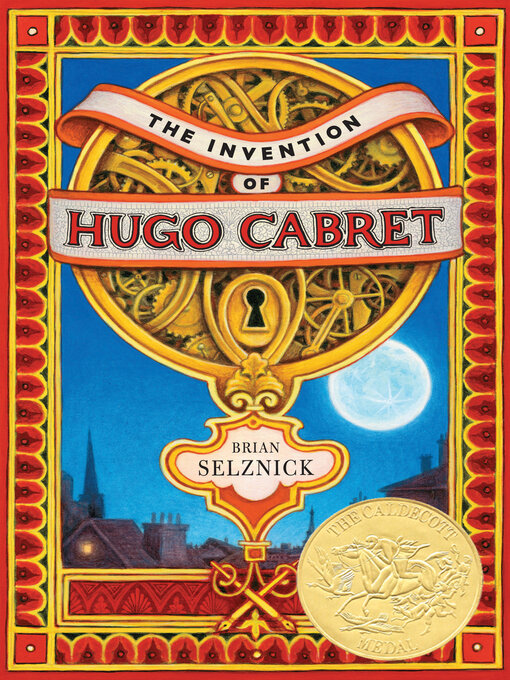Genre: historical fiction
Awards: Caldecott Winner 2008
Quill Award Winner 2007
New York Times Best Illustrated Book of 2007
Los Angeles Times Favorite Children's Book of 2007
Summary:
12-year-old Hugo Cabret is an orphan living above a Parisian train station. He is the timekeeper for the clocks in the stations and is very skilled with mechanical devices. His dad left him an automaton designed to write messages, but it needs fixing. Hugo follows the work log left in his father's notebook to determine how to start the machine. Hugo gets parts from toys at a kiosk in the train station until the booth owner, Georges Méliès, catches him stealing. The man is especially interested in Hugo's journal and promises to return the notebook if Hugo works in his shop to cover the cost of the things he stole. Soon they realize the automaton needs a heart-shaped key to start, similar to the one Georges' goddaughter wears. The group gets the automaton to work making a shocking discovery about its function. Together, they rediscover the magic of automation and filmmaking.
Teacher Evaluation:
I would use this story for a sixth-grade classroom to research skills. This story takes place in 1931 Paris and comments on how World War 1 affected the city and its people. After reading this book, my class would study Georges Méliès, the toy booth owner in the book. We would look at his accomplishments and contributions to the filmmaking industry. We would compare the information we find through research to how the story portrays him. To assess student knowledge, I would assign a group project where students would create a poster about George Méliès to share with the class.



No comments:
Post a Comment